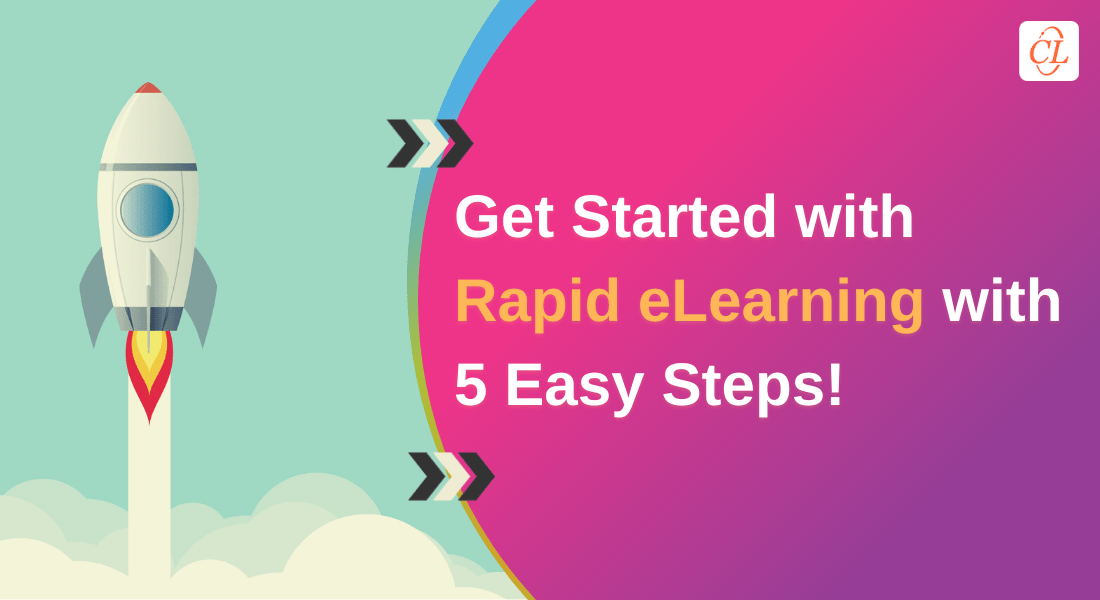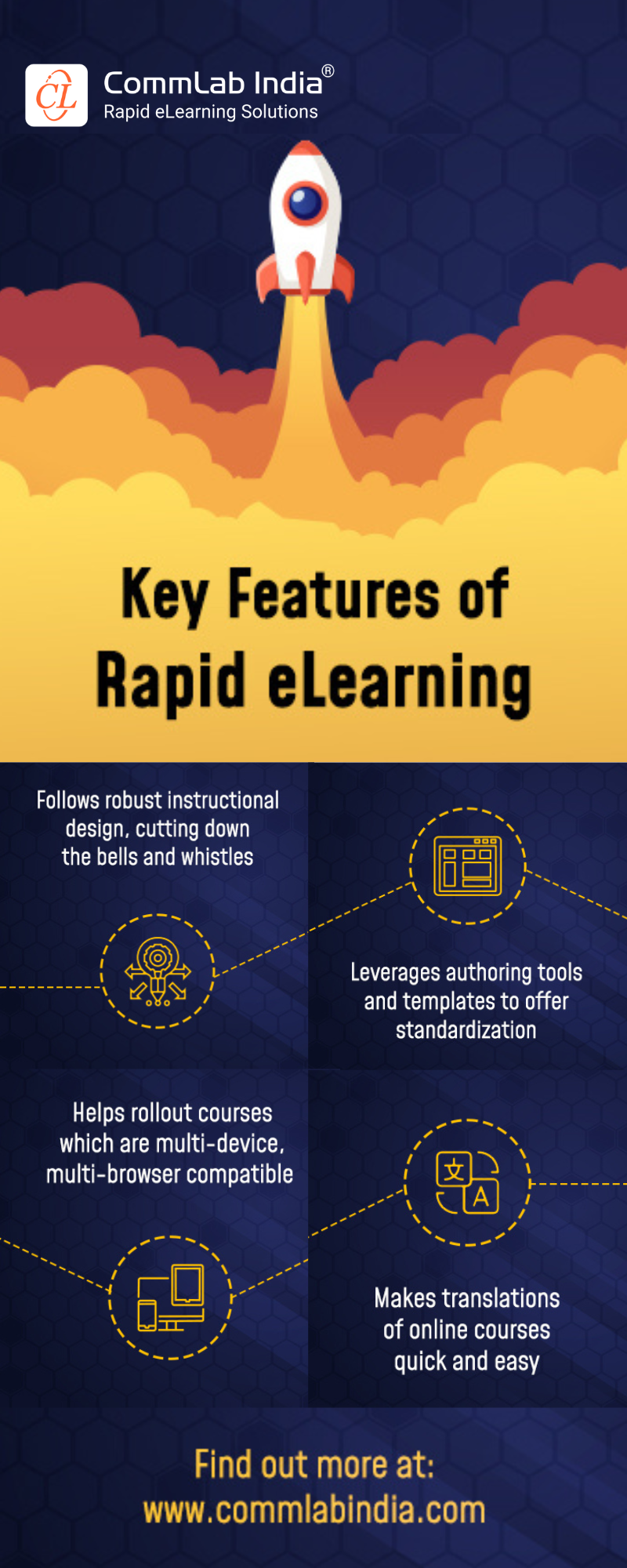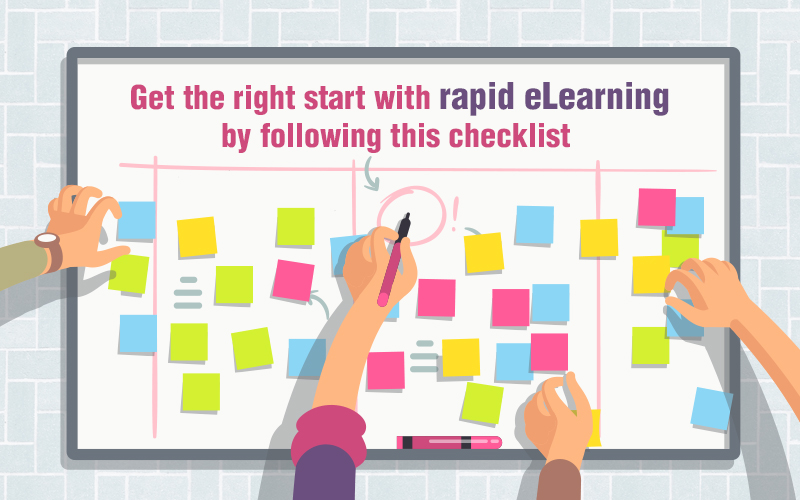How to Get Started with Rapid eLearning for Effective Corporate Training?

“What would life be if we had no courage to attempt anything?” This quote by Vincent Von Gogh motivates me to try new things, explore different opportunities, and more than everything, put in the best of my efforts. If you too, my fellow training managers and L&D professionals, strive to make your corporate training effective and enriching for your employees, there’s no better moment than now! And there’s no better strategy than rapid eLearning!! That’s true. With experts already being convinced by the benefits of innovative rapid eLearning, it’s your time to take a leap of faith and see the successful results for yourself.
Set Sail for Success with Rapid eLearning!
Here are 5 steps to help you get started:
- Set clear learning objectives
- Decide and strategize the content for eLearning courses
- Select the relevant instructional design strategy
- Select the right rapid authoring tools
- Opt for online reviews
To ensure a seamless transition, here’s a quick overview of what rapid eLearning is all about. Let’s begin!
What is Rapid eLearning?
Rapid eLearning refers to the design and development of eLearning courses in a short amount of time (within weeks in contrast to months). Even better, it does not compromise the quality and effectiveness of the content. It involves the use of modern tools and technology such as rapid authoring tools like Lectora, Articulate 360, Adobe Captivate, etc. Along with that, rapid eLearning also takes care of different learning styles and adult learning principles. This helps in setting clear learning objectives and accordingly deciding the relevant instructional design strategy to ensure learner-centric eLearning courses.
Rapid eLearning also entails robust learning management systems and online review tools which help to streamline the process of creating and delivering eLearning materials. Some of the key benefits of rapid eLearning include reduced costs, increased flexibility, and the ability to reach a wider audience.
Now that you have a fair idea about rapid eLearning, let’s move ahead with how to get started with the process and augment the effectiveness of your corporate training.
5 Basic Steps to Get Started with Rapid eLearning
Set Clear Learning Objectives
Objectives are like the lighthouse for the ships in the sea. They guide your way to the final destination. Similarly, in the sea of eLearning, your ship of designing and development process needs to know where it is headed to. Therefore, when you set clear learning objectives, you know what you need to achieve and further plan a strategy about how you are going to achieve it.
You should set your learning objectives by keeping in mind the requirements and goals of both the organization and the employees. This will help you design your rapid eLearning courses in a more effective and engaging way, thereby making the most of corporate training.
Check out the best practices for instructional design to ensure effective rapid eLearning design!
Decide and Strategize the Content for eLearning Courses
Content is the key! Whether it’s offline training or online, we all understand the value of good content. Deciding on which training material to put forward and how to do so plays an important role in determining learner engagement. So, you need to be careful about the need-to-know and nice-to-know content. Need-to-know content forms the essential crux of the training information that is indispensable to achieving the training and business targets.
On the other hand, nice-to-know content can be shared with the learners as a supplement to the basic information in different forms like performance support material, interactive PDFs, infographics, etc. If you’re making a switch from classroom training to eLearning, make sure you strategize your content keeping the digital structure in mind.
Select the Relevant Instructional Design Strategy
Knowing how to present the content is half the battle won. That’s right! You can have the best of the content and top-quality rapid authoring tools, but missing out on selecting the right instructional design strategy can heavily impact the effectiveness of your corporate training. It derails the whole process and purpose of developing eLearning courses and conducting corporate training. For example, if your learners are facing a time crunch and have deadlines to meet, assigning them hour-long courses won’t yield the desired impact.
To ensure you choose the optimum instructional design strategy, you need to be wary of different learning styles and habits along with the adult learning principles such as self-paced learning, convenience, flexibility, purpose, etc. It will help you select the relevant instructional design strategy to design learner-centric, effective, and engaging eLearning courses. You can consider different instructional design strategies like simulation, scenario-based learning, storytelling, gamification, etc.
Pick the Right Rapid Authoring Tools
Authoring tools are vital to designing and developing effective and immersive eLearning courses. Having the right rapid authoring tools offers you various benefits like cost-efficiency, time-saving, easy updation, seamless eLearning course development, and easy translation and publication. The catch here is the “RIGHT” rapid authoring tool. There are plenty of authoring tools with multiple features that guarantee developing effective eLearning courses, but you need to consider your training requirements and select the one that fits your needs the best.
You should also keep in mind the type of content, publishing options, and user-accessibility features while finalizing your rapid authoring tools. In addition to that, look for the asset library, interactivities, and other interfaces and media options provided in the rapid authoring tools. They will help you get started in a hassle-free manner.
Opt for Online Reviews
This option is a life-saver in the whole designing and development process of eLearning courses. From saving Subject Matter Expert (SME) time to ensuring everyone is on the same page, online review tools are the way forward in the rapid eLearning development process. Online review tools like Lectora ReviewLink, Articulate Review 360, and Adobe Captivate Reviewer make the reviewing process simple and feasible.
You no longer have to worry about missing out on important details or going back and forth between the comments as these online tools gather all the reviews from the SMEs and stakeholders in one single location, making it easy for the instructional designers to incorporate the desired changes. Online review tools facilitate easy collaboration among the involved parties and make the feedback process a feasible one. This way online review tools contribute to saving time, effort, and cost as well as facilitating learner-oriented, high-quality eLearning courses.
Parting Thoughts!
Rapid eLearning is here to stay. So why not make a deal with success with your innovative friend by your side? Leverage the power and benefits of rapid eLearning to make the training process more seamless, effective, and enriching for your learners. It enhances your employee productivity and performance to yield maximum training ROI. With that said, rapid eLearning also contributes positively to your overall business goals. In the end, it all comes down to how your eLearning courses are designed. Put your best foot forward with practical and highly-effective instructional design strategies given in the eBook linked below. Check it out now!
Editor’s note: This post was originally published in January 2023 and has been updated for comprehensiveness.






